Where did the candles come from? A brief history of candles in the world
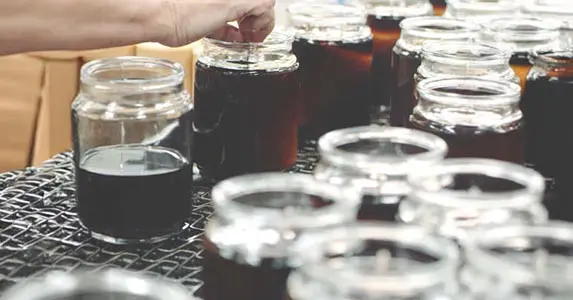
Today we use candles separately from their original purpose. Candles are the perfect atmosphere in the house, a beautiful fragrance and a cozy atmosphere. Candles have not always been associated exclusively with enjoying time with loved ones. In ancient times, candles illuminated the long winter nights, were an integral element used in religious ceremonies and often the only source of light that allowed ancient scholars to study books and develop our civilization.
When candles were invented?
Candles have accompanied mankind since ancient times. Although the first forms of candles appeared some 5,000 years ago, the invention of the candle in the traditional sense of the word is often credited to the actions of the ancient Romans. They were used to illuminate homes and used in religious ceremonies, up to their modern use as a decorative and relaxing element in homes.
Candles in antiquity
We can find references to candles as early as 5,000 years ago, but there is little information to indicate their original origin or who actually invented them. A common view of the beginning of the history of candles is that the ancient Egyptians used rush candles, known in English as rushlights. These candles were created in a very simple way - by dipping sticks in melted animal fat. However, they did not have wicks in the traditional sense of the word. Egyptians were using rushlights as early as 3,000 years p.n.e., however, it is the ancient Romans who are credited with creating the candle in the traditional sense of the word by dipping rolled papyrus in melted tallow or beeswax. At the time, candles were commonly used to illuminate homes, and were also used in religious ceremonies and as aids for travelers. The Greeks used candles m.in. in honor of the gods during religious ceremonies.
Candles in different parts of the world
Different types of wax were used in different regions of the world depending on the available sources. In India, wax was created from the fruit of the cinnamon tree, while in Japan, wax was obtained from the nuts of the. An interesting solution was found in China, where the wick was rolled rice paper, while the wax... local insects mixed with grains pressed into a paper mold.
Candles were also commonly used for religious ceremonies in various cultures. Burning candles have accompanied the Jewish holiday of Hanukkah since about 165 p.n.e., in the Bible we also find references to candles, they have also been permanently assigned to the celebration of Easter since the 4th century n.e.
Candles in the Middle Ages
Until the Middle Ages, candles made of tallow were widely used throughout Europe. The breakthrough came with the introduction of beeswax candles to this continent, which were characterized by clean and even burning, without smoke or soot. There was also a significant difference in the pleasant, honey-like smell as opposed to the pungent smell of tallow. Beeswax candles were widely introduced in churches, but due to their high price, only wealthy people could afford them. A craft guild of candle makers emerged in medieval England and France. Candle makers went from house to house producing candles from the tallow left behind, and over time they also began to create their own manufactories and sell candles in their own stores.
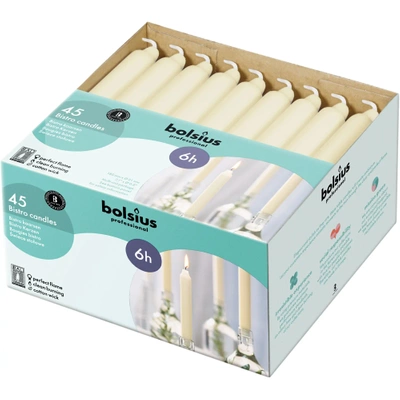


Candles in modern times
In colonial times in the US, the benefits of a plant called waxwort were discovered, and for a time candles were made from it, but due to the extremely laborious and cumbersome process of extracting wax from waxwort, candles made from this plant were soon forgotten. In the 18th century, due to the development of whaling, there was a breakthrough - a raw material called spermaceti, extracted from the head of a sperm whale, began to be used to create candles. This wax was more durable and thanks to it the first "modern" candles as we still know them today were created. In those days, both spermaceti and beeswax were the only waxes that did not emit an unpleasant odor when burned, which was their great advantage.
Candles in the 19th century - the time of the industrial revolution
The 19th century was the age of industrial revolution also in the candle industry. This is when most of the major events affecting candle making as we know it today took place. French chemist Michel Eugene Chevreul discovered in the 1820s how to extract stearic acid from fatty acids of animal origin. Thanks to his discovery, stearin wax was created, which is characterized by hardness, durability and purity of combustion. Stearin candles are still popular today. Importantly, nowadays, thanks to the development of technology, stearin can be obtained not only from fatty acids of animal origin, but also from plant origin, which makes such candles suitable for vegetarians and vegans.
In 1834, inventor Joseph Morgan contributed to a huge boost in the candle industry with the development of a machine that allowed the continuous production of molded candles (known as lump candles) through the use of a cylinder with a moving piston used to "eject" the candles as they cooled down. With the introduction of machine-made candles, the commodity began to be available in mass production and became an object of desire for many sections of society.
One of the brands that contributed to the spread of candles in the 19th century was the Candle-lite Company. Thanks to the joint efforts of Emery's owner and Dr. Ernest Twitchell - a chemist, inventor and philanthropist - the so-called "Twitchell process" was created, which significantly increased the safety and excellence of the candles of the time. His crowning achievement was the prestigious Perkins Award, which he received in 1917.
Paraffin, also known as paraffin wax, was led to the candle industry in the 1850s, when chemists discovered how to effectively separate the waxy substance found in petroleum. With new opportunities to use existing waste from oil production, the candle industry was able to create even cheaper candles. Due to the massive use of oil, the waste was so abundant that manufacturers were able to create ever-cheaper paraffin-based candles.
With the introduction of the light bulb in 1879. candle production began to change its face. They were no longer needed to provide a source of light.

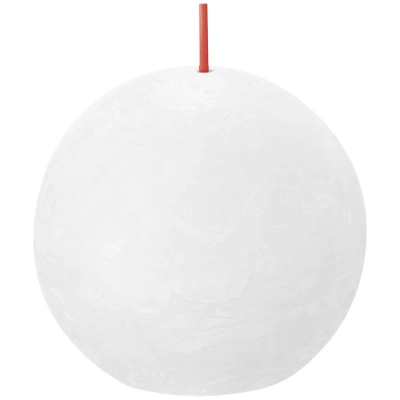
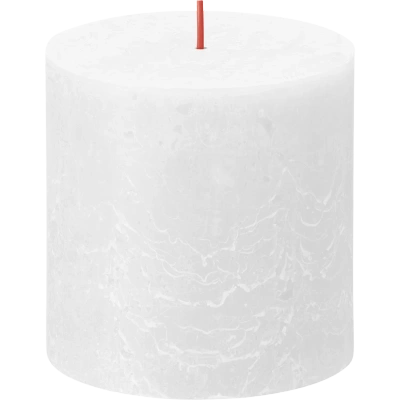
Candles in the 20th century
Candles began to gain popularity again in the first half of the 20th century, keeping growth steady until the 1980s, when there was a new interest in candles as decorative items to help create a cozy, homey atmosphere in an increasingly fast-paced world. Candles have also become a popular gift for any occasion. Thanks to this new interest, the range of sizes, shapes and colors has increased, and there has been a large-scale emergence of scented candles, which we still love today.
The 1990s saw an unprecedented rise in the popularity of candles, with new types of candle waxes being developed for the first time in more than a century. In the United States, agricultural chemists have begun to develop soy wax, a softer and slower burning wax than paraffin. It is also one of the types of natural waxes that, unlike paraffin, is not a waste product of petroleum production. The production of plant waxes being a renewable source is much more beneficial and safe for the environment, hence the growing interest in natural candles. At the same time, other vegetable waxes appeared, such as palm wax, coconut wax or rapeseed or hemp wax. The most popular in the 21st century are soy scented candles.
Candles currently
Candles have gone through a long evolution since their appearance. Although no longer used as the main source of light, they continue to gain popularity around the world. some of the more popular choices are scented candles in a jar. Today, candles symbolize celebrating with loved ones, ignite the senses during evenings for two, and help you relax. Candles, too, are used to properly honor any ceremony and help accentuate the homey, cozy atmosphere by giving everything a warm and beautiful glow.

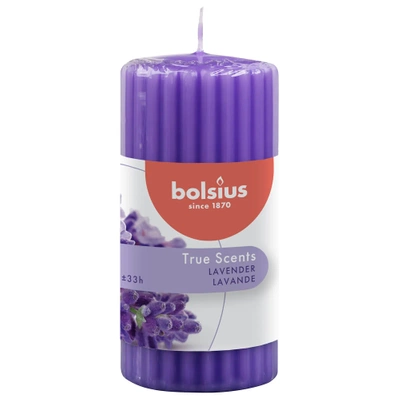

Modern candles - a combination of functionality, symbolism and aesthetics
Modern candles, although originally invented as a source of light, have evolved over the years into objects of great decorative and emotional significance. Nowadays, they are mainly used to create an atmospheric atmosphere, highlight special moments, relaxation and as an element of interior design. Candles are also an important part of rituals and ceremonies, both religious and personal.
Types of modern candles
Thanks to advances in technology and innovations in wax production, today's candles on the market vary in material, shape, fragrance and purpose. Here are some of them:
- Soy candles are among the most popular candles in the eco trend. Soy wax, extracted from soybeans, is all-natural, biodegradable and burns more slowly than traditional paraffin wax. This makes soy candles more environmentally sustainable and more pleasant to burn. Soy candles they also have a cleaner scent, making them ideal for aromatherapy and creating a peaceful atmosphere.
- Wax candles, made of beeswax, is another natural choice that is gaining in popularity. Beeswax is a natural and renewable product, and burning it gives off a pleasant honey scent that is relaxing and aromatherapeutic. Wax candles are also an excellent choice for spaces where you want to purify the air - beeswax has purifying properties.
- Paraffin candles. Although paraffin is a petroleum-based wax product, it is still a popular choice for candles, especially those with strong fragrances. Paraffin candles are characterized by their wide availability and relatively low price. They are often used in the production of scented and decorative candles. However, it is worth remembering that untreated paraffin can emit substances during combustion, so their use requires caution.
- Palm Candles are made from wax extracted from palm oil. This is an alternative to paraffin candles, although their production is associated with controversy over environmental impacts (such as cutting down rainforests to grow palm trees). Nevertheless, palm candles have a smooth surface, long-lasting burning, and can have a strong fragrance. They are often used in the production of decorative candles.
- Coconut candles are a relatively new discovery in the candle market. Coconut wax comes from the flesh of coconuts and is one of the purest and most natural waxes. Candles made from this wax have an exceptionally smooth texture, burn very cleanly, and burn for a long time. In addition, coconut wax has a low melting point, which means that coconut candles burn evenly and do not form unsightly deposits.
- Gel candles are unique because their wax has a transparent, gel-like consistency. They are an excellent choice for decoration, because you can put a variety of ornaments into them, such as seashells, stones or flowers, which makes them extremely attractive. Gel candles also burn very slowly, which makes them long lasting. They are often used as decorations in restaurants or special events.
- Aromatherapy candles is the ideal choice for those seeking relaxation and serenity. The wax of these candles is enriched with essential oils that release soothing fragrances as they burn. Depending on the type of oils, such candles can help reduce stress, improve concentration, or make it easier to fall asleep. Popular scents include lavender, eucalyptus, jasmine, orange or sandalwood.
- Massage candles is an innovative solution that combines the advantages of scented candles with a relaxation function. While burning, the wax of the candle becomes warm, and once lit, it can be used for massages. The wax of these candles contains moisturizing oils that care for the skin, hydrating and nourishing it. It is the perfect choice for romantic evenings, as well as for home spa treatments.
- Decorative candles have primarily an aesthetic function. They come in a variety of shapes, colors and sizes, and their purpose is to decorate the interior. They can take the form of spheres, cones, flowers, or even characters. They are often used as table arrangements for special occasions such as weddings, parties and dinners.
- Tealights candles and warmers are small candles often used for decoration. They usually burn in metal or plastic containers, which makes them very safe and convenient to use. They are commonly used in aromatherapy, as well as for heating fragrance oils in fireplaces. Great for creating a subtle atmosphere in any room.
Candles in the 21st century - diversity in style and function
Modern candles are a wide choice for people who are looking for more than just a source of light. Nowadays, there are different types of waxes, forms, colors and fragrances available on the market to create a unique atmosphere in any room. Candles have also become a symbol of taking care of oneself and spending time in a relaxing atmosphere, and their use goes far beyond the traditional roles they played in the past.